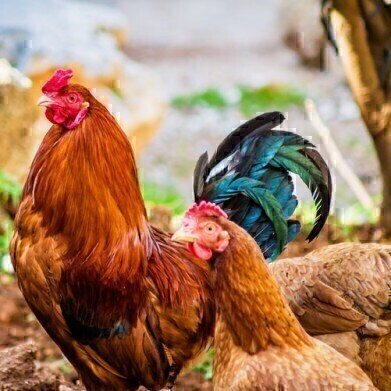LC-MS
Can Chromatography Detect Antibiotics in Food?
Feb 27 2021
Antibiotics have played an essential role in improving human health. Although we might associate antibiotics with Alexander Fleming, Paul Ehrlich, and Selman Waksman, they have in fact been used inadvertently for thousands of years to treat infections. But it was in the late nineteenth and early twentieth centuries that scientists formulated theories and started developing specific antibiotics to improve human health.
But widespread use of antibiotics has created some problems with bacterial infections becoming resistant to the antibiotics we have developed. This is partly due to the increased use of antibiotics but also due to the misuse of antibiotics. Antibiotics have also found their way into our food chain and this could cause health problems. It has been difficult to analyse for more than a few antibiotics at a time due to the different chemical properties of the antibiotics, so monitoring the situation has been difficult until now. In a recent paper published in the Journal of Agricultural and Food Chemistry researchers report on a new chromatography method that can detect antibiotics with different chemistries in a variety of foodstuffs.
Stopping antibiotic resistance
Antibiotics can make their way into the food chain in several ways. For animal produce like meat, eggs and dairy, the antibiotics must be withdrawn from the animals for a period before the animals are slaughtered or the produce collected. Otherwise, the antibiotics can enter the food chain. Crops are not immune from antibiotics either as they can accumulate in vegetable or fruit if manure fertilizer or treated wastewater is used.
Eating food stuffs contaminated with antibiotics over a long period of time could cause health problems due to an imbalance in the gut microbiome or they could lead to bacterial resistance to antibiotics. Antibiotic levels in foods have been monitored for some time, but previous methods have only been able to analyse for a few compounds at a time, for example a certain class of antibiotics that had similar chemical structure or properties. Previous methods were based around a single food type too.
Chromatography analyses the antibiotics
But researchers in China have developed a new method based on liquid chromatography-tandem mass spectrometry (LC-MS/MS) that can detect antibiotics from multiple categories and different food types too. Improvements in liquid chromatography are discussed in the article, Practical Impact of Dispersion on Fast Chromatographic Separations.
The researchers added trace amounts of 81 different antibiotics from seven different classes to samples and tested different methods for extracting the antibiotics. They found that one extraction method which involved freeze drying and homogenizing the samples before extraction with acetonitrile, magnesium sulphate and sodium acetate allowed them to isolate 77 of the antibiotics.
The method they established was both sensitive and accurate and the team found it could be used on different foodstuffs including flour, eggs, milk, and bananas. The method should help with the understanding, monitoring, and regulating antibiotic levels in foods.
Events
Apr 22 2025 Kintex, South Korea
Analytica Anacon India & IndiaLabExpo
Apr 23 2025 Mumbai, India
Apr 27 2025 Portland, OR, USA
May 11 2025 Vienna, Austria
May 18 2025 Tempe. AZ, USA













